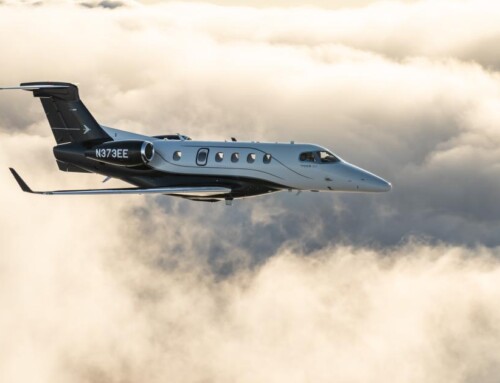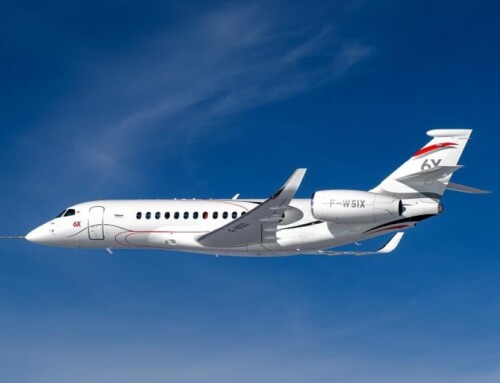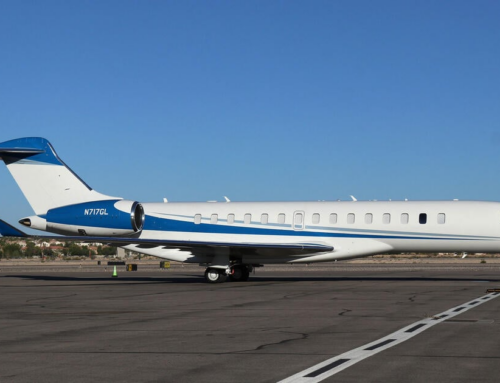Business aviation’s safety record isn’t bad but it needs to improve to match commercial air transport, and the Flight Safety Foundation is working to achieve that. FSF’s Greg Marshall talks to Dave Calderwood.
Business aviation has a long way to go to become as safe as commercial air transport and the Flight Safety Foundation (FSF), along with other organisations and partners such as the Middle East Business Aviation Association (MEBAA) and National Business Aircraft Association (NBAA), are highlighting the specific threats to business aviation, wherever it takes place.
Comparing accident numbers per hours flown is commonly used but that favours commercial air transport because of the generally longer time spent in the cruise, traditionally the safest part of a flight. So, these days, another measure to look at is the fatal accident rate per departures – the reasoning is that the greatest threats to flight are during take-off, approach and landing.
Boeing’s much-respected annual accident report shows that scheduled commercial air transport has a global fatal accident rate of 0.033 per 100,000 departures. That’s an incredible one in three million chance.
For business aviation, turn to the 2015 safety report by the International Business Aviation Council (IBAC) and the corresponding global fatal accident rate is 0.40 per 100,000 departures for all business aircraft, jets and turboprops. That’s one in 250,000, a much higher accident rate. These figures are averaged over a number of years to iron out any ‘bad years’.
However, it’s not all bad news. Dive deeper into IBAC’s figures and corporate aviation jet traffic is achieving a very similar figure to commercial air transport, with 0.03 accidents per 100,000 departures. So, business aviation can be just as safe as commercial air transport.
The FSF isan international non-profit organisation whose sole purpose is to provide impartial, independent, expert safety guidance and resources for the aviation and aerospace industry. Vice-president of global programmes, Greg Marshall, said: “In commercial aviation, the risks are very well known. However, in business aviation, it’s quite different as it’s obviously on-demand services in support of a corporation’s activities.
“There are a number of areas where we have concerns. One is ‘rates of effort’, which looks at how much flying activity is being undertaken by an organisation and the utilisation of crews. So, when you have a high rate of effort, you’re basically maximising the use of the airframes and the crews that you have available.
“High rates of effort can be fine provided they’re adequately managed but problems can occur if you have a number of changes that affect crew scheduling,” continued Marshall. “If you have crews rostered for certain flights and you have a number of short-notice changes to those flights that affect rostering, then you introduce the potential for fatigue issues. The trick is to have adequate systems in place so you are managing the fatigue that’s associated with high rates of effort.
“We know that a number of business aviation operations are running under fairly high rates of effort. There’s more demand on crews to operate long-haul, where they are required to operate fairly frequently to and from various destinations in the world. That can result in a number of issues, including fatigue for crew, but also it can mean management pilots are not spending enough time administering the business because they’re required to fly more often. The other consideration is that there are time pressures put on crews to operate at relatively short notice.
“One of the biggest risks we see in business aviation is within a company that might have a small flight department and there might only be a limited set of crews. The potential demand
So what can an operator do to make sure the crew aboutto fly is fresh and not suffering from fatigue?
“Under normal regulations there is a requirement that pilots are rostered such that they don’t incur excessive duty hours and excessive flight time hours, within a 7-14-28 day period,” explained Marshall. “That is essentially there to make sure crews cannot be used at any particular time of the day or night irrespective of their previous duty period. The whole basis is to regulate and help to manage fatigue for those crews.
“Fatigue risk management systems have been around for a while and continue to evolve. What they recognise is that the previously rigid regulatory impositions on flight and duty times is not always the most effective method of managing fatigue. Studies have been conducted on fatigue risk management processes so that, for certain operations at certain times of the day, a crew needs to have a certain amount of rest time. Therefore, you can actually measure a person’s fatigue level through a system of scores.
“So, if you’re operating a very early morning flight, you might have a higher fatigue risk score than if you’re operating a late morning or early afternoon flight, simply because you have to get up early in the morning. You might be up at four or five in the morning for a wheels-up time of 6am. That is more fatiguing because it could potentially interrupt your normal sleep patterns.
“Using a fatigue risk management system, you can actually forecast what a fatigue rate might be for individual crew members and you can roster accordingly. It’s also very useful in short-term applications where you have to find a crew to operate a particular service at short notice. You can enter in the details of the proposed duty times, it will factor in the hours that the crew has been awake, then give you a forecast fatigue score, which will tell you whether or not you can use that particular crew member or crew set.
“Fatigue risk management systems are becoming an alternative method in a number of states. You can either utilise the prescriptive regulations that currently exist or you can adopt a fatigue crew risk management system as part of your operation to manage the operational tempo of your crew. In fact, I’m part of an International Civil Aviation Organization (ICAO) working group looking at fatigue risk management systems for rotary operations, which we’re looking at introducing at some stage.”
Of course, modern business aircraft are playing a role in fatigue management too. Marshall points out that the sophisticated flight management systems fitted to the latest aircraft help the crew manage operational risk. Features such as enhanced ground proximity warning systems are a huge aid to the crew, particularly when operating to a ‘difficult’ airport.
“Any time you can alleviate or help manage a pilot’s workload, you will also be reducing fatigue levels and helping the ability to concentrate on key areas of the flight. It’s not directly related to fatigue management, there’s still the requirement for certain long-haul flights that you carry another member of crew, but certainly modern aircraft are less fatiguing to operate than say, 30 or 40 years ago.”
Source: Arabian Aerospace
 Cessna Citation V
Cessna Citation V










